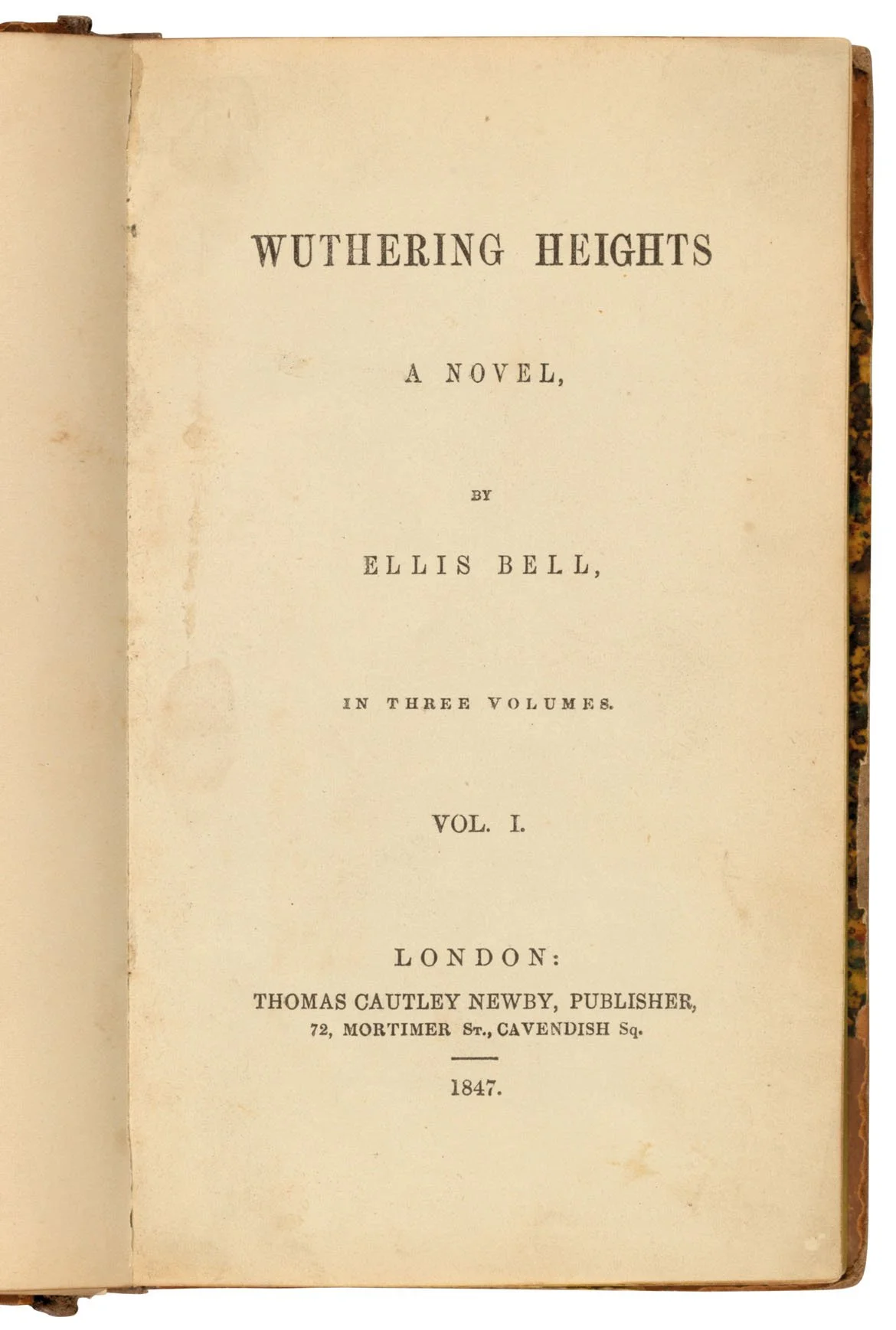Wuthering Heights (2026): Still with the white Heathcliff?
/Warning: This post references quotes from Wuthering Heights which contain outdated and offensive language concerning Romani people.
As soon as the lead actors in Emerald Fennell’s upcoming adaptation of Emily Brontë’s 1847 Gothic classic Wuthering Heights were announced, the internet was in an uproar. The news that Margot Robbie would play Catherine Earnshaw drew immediate criticism; blonde, blue-eyed Robbie, 35, doesn’t quite fit Cathy’s description of a brown-haired, brown-eyed teenager. More than that, though, people were offended by the choice to cast Jacob Elordi as male lead Heathcliff.
How can it be a faithful adaptation, one has to wonder, when Margot Robbie has a face that has seen an iPad, and, more pressing, when the actor playing Heathcliff is white?
“A dark-skinned gipsy”
Heathcliff is the foster brother of Cathy and Hindley Earnshaw, raised alongside them and Ellen “Nelly” Dean, the novel’s narrator. Found on the streets of Liverpool and taken in by the Earnshaw siblings’ father, Heathcliff serves many roles in Wuthering Heights: villain and antihero, love interest and oddity. He grows up among landed gentry on the edges of the Yorkshire moors, but never quite fits in. Race is at the centre of that struggle.
Title page of the 1847 edition of Wuthering Heights. eMILY bRONTë PUBLISHED THE BOOK UNDER THE PSEUDONYM ELLIS BELL. (Courtesy of Christie’s Auction House.)
Heathcliff is often called racially ambiguous, but I don’t think there’s much ambiguity about it. Throughout the novel, emphasis is placed on the fact that Heathcliff is visibly nonwhite. People remark countlessly on the darkness of Heathcliff’s skin, and on his black eyes and hair. This isn’t a case of him having a tan — when Mr Earnshaw first presents young Heathcliff to his family, he says, “it’s as dark almost as if it came from the devil.”
It seems clear from the text that Heathcliff is Romani — he’s called a “gipsy” repeatedly, and looks “exactly like the son of the fortune-teller” — or else of direct South Asian heritage¹. A neighbour believes him to be “a little Lascar” (that is, an Indian sailor who worked on a European ship); Nelly tells Heathcliff he looks as though his mother could be “an Indian Queen” and his father the Emperor of China.
“It’s just a book”
In light of all that, it’s understandable why people are unimpressed by the choice to cast Elordi. Writer-director-producer Emerald Fennell didn’t consider Heathcliff’s ethnicity at all. According to the BBC, Fennell gave him the role (sans audition) because he “looked exactly like the illustration of Heathcliff on the first book that I read.” She added that “it seemed to me he had the thing” to play Heathcliff.
Whatever “the thing” is, it’s not ethnicity.
Previous adaptations have cast white men as Heathcliff, of course (though Andrea Arnold’s 2011 version cast a Black actor, after an initial search for a Romani actor). But in 2025, it’s deeply strange that the opportunity to cast a canonical nonwhite character was flouted. Especially considering that nonwhite actors were cast in white roles: Nelly is portrayed by Vietnamese-American Hong Chau, and Edgar Linton by Pakistani-British Shazad Latif.
But the movie’s casting director, Kharmel Cochrane, has no regard for the importance of race to the story. When asked about criticism of the casting choices, she said, “You really don’t need to be accurate. It’s just a book.”
Race is integral to the story
The thing is, there’s no way to adapt that book meaningfully without considering Heathcliff’s race. It’s central to his character, to the actions of those around him, and to the story itself. Heathcliff’s race is the source of others’ cruelty, but Brontë also uses it to explain his own cruel, abusive, and strange nature. He’s not like Hindley, or Cathy, or the Lintons, whose whiteness is arguably as integral to the story as Heathcliff’s “dark face and hair.”
Margot Robbie and Jacob Elordi as Cathy Earnshaw and Heathcliff. Courtesy of Warner Bros. Pictures.
Cathy loves Heathcliff to the point of viewing him and herself as one person, at one point declaring, “I am Heathcliff,” but in the end, Heathcliff is other: a brown boy taken in off the street as though he’s a strange pet. When Cathy chooses to marry the more suitable Edgar Linton — pale, blond, and from an old, wealthy English family — instead of Heathcliff, it ultimately leads to the downfall of everyone in the story.
Emily Brontë, painted in 1833 by her brother, Branwell Brontë. Courtesy of the National Portrait Gallery, London.
Whether Emily Brontë was wholly conscious of it or not, racism is part of the very fabric of the story.
Lost opportunity, lost cause
I’m sure that, like everything Emerald Fennell has directed over the last few years, her Wuthering Heights will be beautiful and punchy. Faithful? No. Good? Well, that remains to be seen.
Regardless, I doubt it has a chance to be a good adaptation. By ignoring Heathcliff’s racial identity, this adaptation ignores the very fabric of the story. It’s a tragically lost opportunity to explore an interesting and often-ignored facet of Gothic literature. And, for an adaptation being made in 2025? It’s frankly embarrassing.
Moira Rickett is a freelance editor and translator and a student in the Professional Writing program at Algonquin College. She likes nonfiction writing, literary analysis, and collecting useless trivia, usually about dead historical figures. When not working on her latest project, she can usually be found procrastinating working on her latest project.




